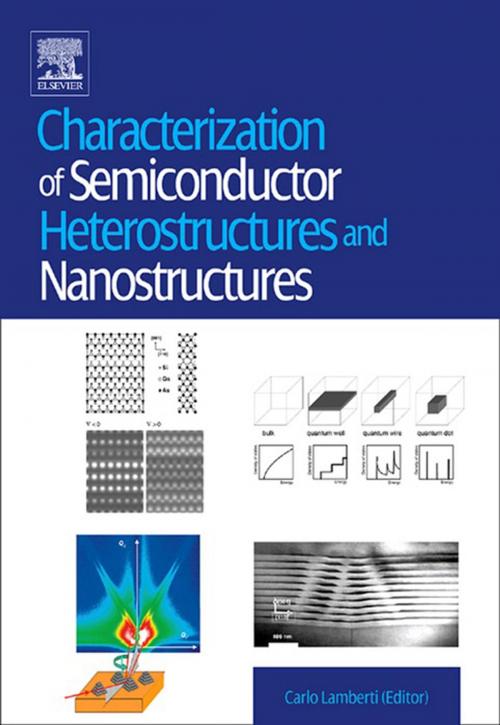Characterization of Semiconductor Heterostructures and Nanostructures
Nonfiction, Science & Nature, Science, Chemistry, Physical & Theoretical, Technology, Engineering, Chemical & Biochemical| Author: | ISBN: | 9780080558158 | |
| Publisher: | Elsevier Science | Publication: | August 11, 2011 |
| Imprint: | Elsevier Science | Language: | English |
| Author: | |
| ISBN: | 9780080558158 |
| Publisher: | Elsevier Science |
| Publication: | August 11, 2011 |
| Imprint: | Elsevier Science |
| Language: | English |
In the last couple of decades, high-performance electronic and optoelectronic devices based on semiconductor heterostructures have been required to obtain increasingly strict and well-defined performances, needing a detailed control, at the atomic level, of the structural composition of the buried interfaces. This goal has been achieved by an improvement of the epitaxial growth techniques and by the parallel use of increasingly sophisticated characterization techniques and of refined theoretical models based on ab initio approaches. This book deals with description of both characterization techniques and theoretical models needed to understand and predict the structural and electronic properties of semiconductor heterostructures and nanostructures.
- Comprehensive collection of the most powerful characterization techniques for semiconductor heterostructures and nanostructures
- Most of the chapters are authored by scientists that are among the top 10 worldwide in publication ranking of the specific field
- Each chapter starts with a didactic introduction on the technique
- The second part of each chapter deals with a selection of top examples highlighting the power of the specific technique to analyze the properties of semiconductors
In the last couple of decades, high-performance electronic and optoelectronic devices based on semiconductor heterostructures have been required to obtain increasingly strict and well-defined performances, needing a detailed control, at the atomic level, of the structural composition of the buried interfaces. This goal has been achieved by an improvement of the epitaxial growth techniques and by the parallel use of increasingly sophisticated characterization techniques and of refined theoretical models based on ab initio approaches. This book deals with description of both characterization techniques and theoretical models needed to understand and predict the structural and electronic properties of semiconductor heterostructures and nanostructures.
- Comprehensive collection of the most powerful characterization techniques for semiconductor heterostructures and nanostructures
- Most of the chapters are authored by scientists that are among the top 10 worldwide in publication ranking of the specific field
- Each chapter starts with a didactic introduction on the technique
- The second part of each chapter deals with a selection of top examples highlighting the power of the specific technique to analyze the properties of semiconductors















